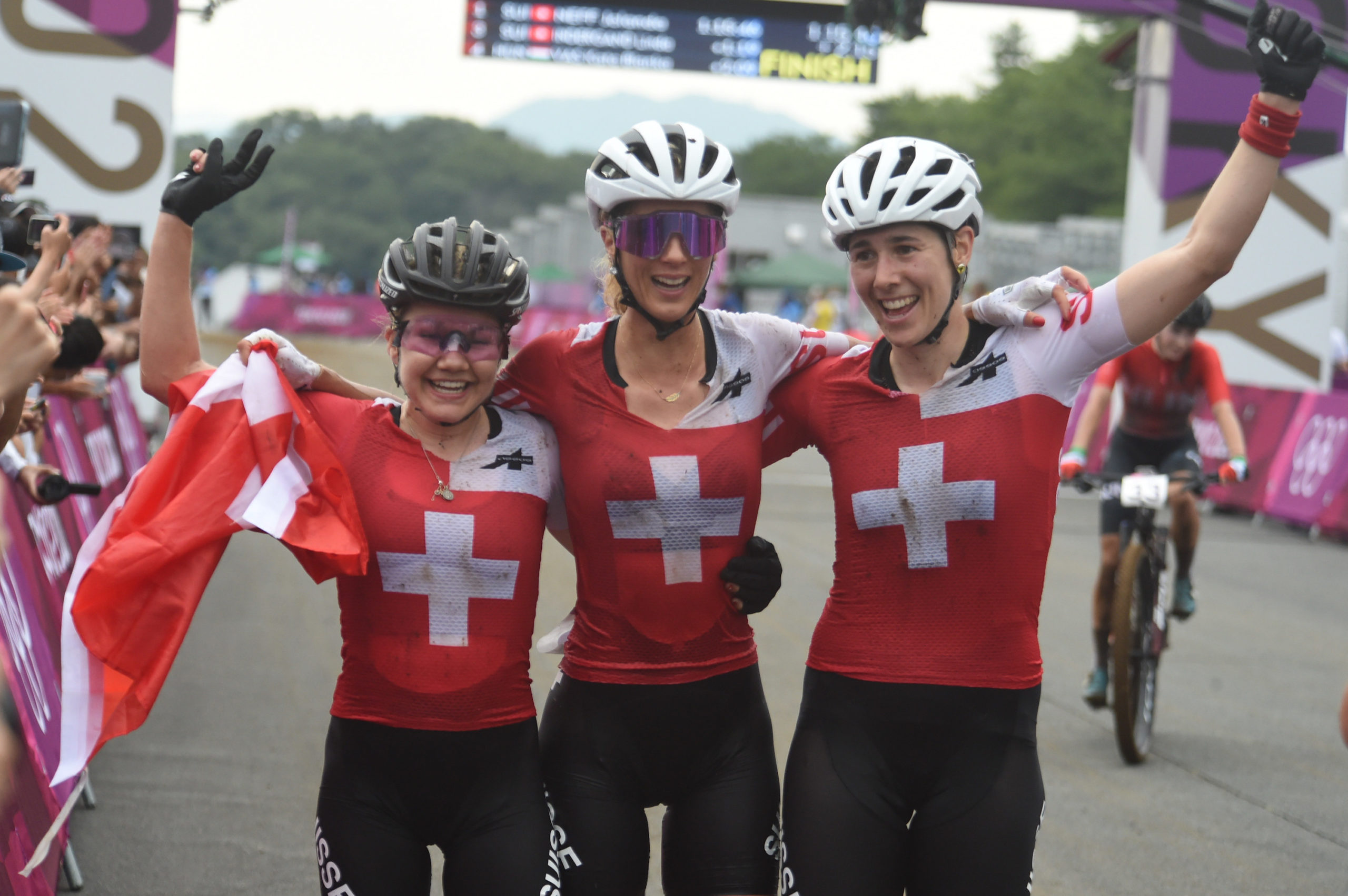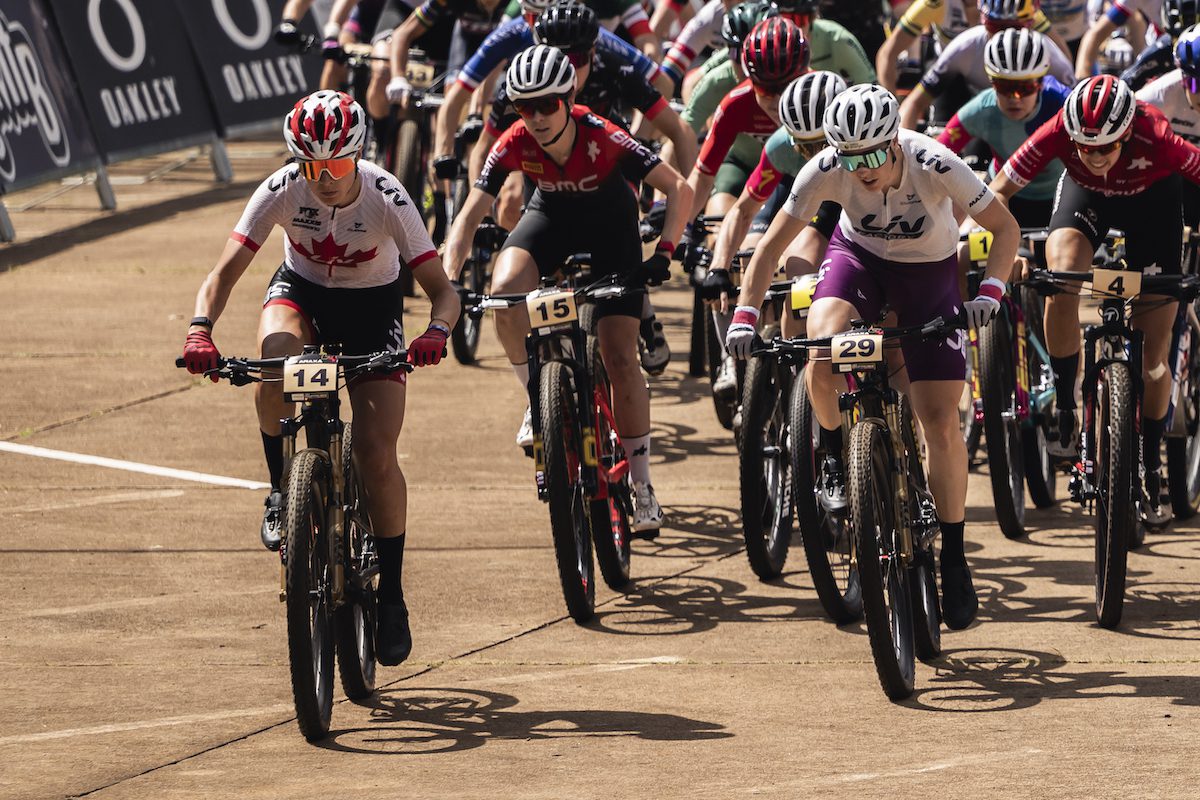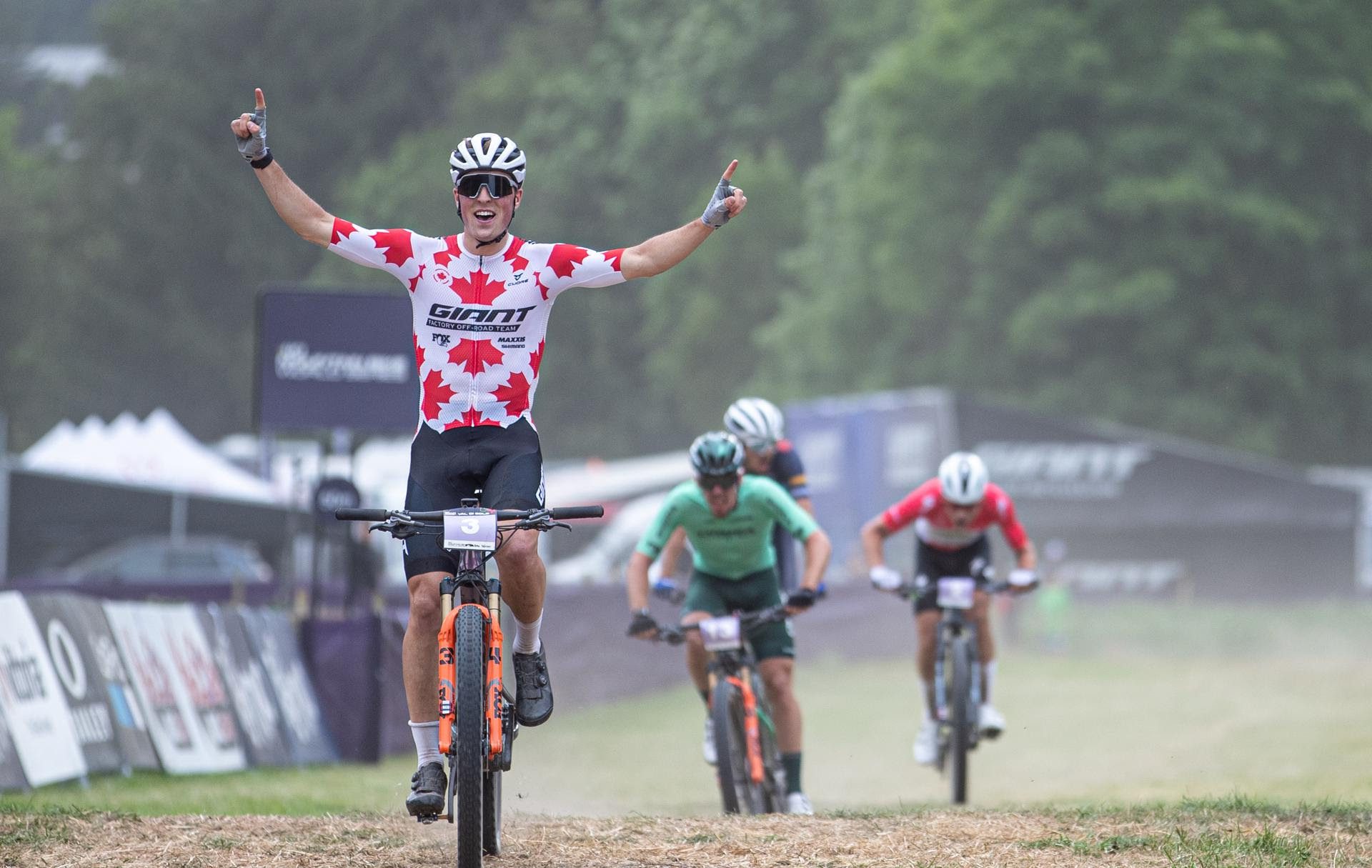Where does Canada’s Olympic XCO qualification stand after Brazil World Cups?
Trail to Paris Games is coming down to the wire
 Photo by:
Sirotti
Photo by:
Sirotti
Paris Olympics are under 100 days away, which means the race to earn spots on the start line is heating up. Making this more exciting, Canadian cross country racers, collectively, just had their best start to the World Cup in years in Mairiporã and Araxa, Brazil.
Making it to the start line for the Olympic mountain bike race is a somewhat complicated process, though. First a country has to earn a spot, or two, in the 36-rider field. Then each athlete has to qualify for one of those spots. How does that work, and where does Canada stand heading into Paris? We’ll break that all down.
There’s three parts to this story. How many spots will Canada get on the start line in Paris? How can Canadian riders qualify for those spots? Who is in the running to qualify at this point?
How does Olympic selection work?
Selection for the Olympic mountain bike race is, like most things with the UCI, based on accumulating points. Racers earn the most points at events like world championships and World Cup races. But they can also gain points through lower-level HC, C1 and C2 events.
Seems straight forward, right? More points equals qualifying? Well, not so fast. From there, it gets complicated.
Individual athletes earn points, but selection is based off nation ranking. Nations are ranked by only their top three athletes, with separate rankings for men and women. That ranking determines how many spots each nation gets (their “quota”). It is then up to each national federation (NOC) to determine which athletes gets to fill that quota. Since a country may have more capable riders than they have athletes, this makes the various national selection processes almost as important as qualifying places in the first place. For example, the United States had four women in the top 10 (Haley Batten, Savilia Blunk, Kelsey Urban and Kate Courtney finished 2nd, 3rd, 8th, and 10th, in that order). Switzerland had four riders in the top 12. Both countries can still send a maximum of two women to Paris.
Nations are ranked based on points earned over a designated qualification period. For the Paris Games, that runs from May 7, 2022 through to May 26, 2024. For a point of reference, that starts near the beginning of the 2022 World Cup season and concludes with the 2024 Nove Mesto World Cup.
Final quotas for each nation will be communicated by the IOC (International Olympic Committee) on June 3, 2024.
Each nation can earn a maximum of two spots for the cross country mountain bike race, in each of the men’s and women’s races. More on that breakdown below.

How many spots can Canada get?
There are 36 spots for men and 36 spots for women on the mountain bike start line in Paris. The top eight countries, with men and women ranked separately, get two spots each. That’s a maximum of four riders total, if a country’s men and women both rank in the top eight.
This is a reduction from the Tokyo Olympics, where the UCI and IOC briefly flirted with the idea of the top country qualifying three riders. Organizers did not appear to love it when the Swiss women, led by Jolanda Neff, swept the XCO podium, so it’s back to two riders maximum.
Nations ranked nine to 19 get one rider each. After that, there is a convoluted series of intertwinded rules about who gets a handful of additional spots until the field reaches is maximum of 36 riders.
Because of this quota system, national organizations must strategize how to increase their qualification points to send the full compliment of four riders. CX Hairs Bill Schieken has an excellent guide to how the United States has worked to maximize its quota, and how selection will unfold from there, if you’re interested. We’ll be focusing on the Canadian angle here.
Going into the two Brazil World Cup rounds, Canada sat 11th in the men’s rankings (with 4556 points) and 12th in the women’s standings. U.S.A. was eighth in the men’s standings, with 5103 points and Great Britain was eighth for the women with 5030 points. These rankings are updated weekly.
After the second World Cup in Araxa, Canada’s women briefly moved up to ninth, though a ways off Great Britain in eighth. A week later, Canada are back down to 13th. Barring some impressive turn-around, or misfortune for another nation, its looking like Canada will, for the first time in decades, only earn one of the possible two women’s spots at the Olympic mountain bike event.
On the men’s side, Canada is holding steady in or around 12th. With 977 points between the Canuck men and, like on the women’s side, Great Britain, it’d be a really tall order for the Canadians to move all the way up into eighth spot. This means, like in Tokyo, Canada will all but certainly only have one men’s spot on the start line in Paris this summer.

How is Canada’s team selected?
Helping your country qualify for spots in the Olympics is only the first step on any individual athlete’s journey to the Games. Once a country has spots (or as athletes are earning points for their country), the top athletes then have to compete amongst each other to earn one of those spots. Which rider gets to go to the Olympics is decided by each country’s national sporting organization. In Canada, that is Cycling Canada.
Cycling Canada sets out a list of criteria for each discipline of cycling that determine which athletes can qualify. For track and road, where athletes must work as a team, that can be complicated. For mountain biking, it is a more “simple” list of criteria that athletes must meet.
The Cycling Canada selection criteria window is from May 12, 2023 to May 26, 2024. Again, that ends right after the upcoming Nove Mesto World Cup XCO.
Here is the Olympic selection criteria for mountain biking, as quoted from Cycling Canada’s selection document:
“Athletes will be nominated in the following order of priority until Canada’s quota has been filled:
- Top 5 finisher in the Elite XCO at the 2023 World Championships or a UCI World Cup.
- Top 12 finisher in the Elite XCO at the 2023 World Championships or an Elite World Cup
in Europe. - Top 3 finisher in the U23 XCO at the 2023 World Championships or a UCI World Cup in
Europe. - Top 20 finisher in the Elite XCO at the 2023 UCI World Championships or at a UCI World
Cup in Europe. - Discretionary nomination considering Section C, Clause 3.
Results must be in the top half of athletes registered for the event. In the event of a tie, the athlete with the best result will be given priority. If there is still a tie, the athletes’ second-best eligible results will determine priority. If there is still a tie, it will be broken at the discretion of the Nomination Panel.
CC reserves the right to modify selection based on overarching strategy to support performances in all cycling disciplines, including but not limited to entering athletes in more than one discipline.”
There are a few key details buried in there. It is crucial that the list is “in order of priority,” meaning that if one athlete meets the second criteria and one meets the third, the rider who meets the second criteria gets the spot. The “in Europe” part of the second criteria is crucial, as will be explained below. That means a top 12 at two of the 2023 World Cup’s and two of the three pre-Paris World Cup rounds would not count.

Who gets to go?
Theoretically, any Canadian rider can still have one great race and qualify, as long as they are racing in elites, and on the start line in Nove Mesto. That is because no Canadian has met either the first or second qualification criteria.
Jenn Jackson, the current elite XCO national champion and by far the top-ranked by UCI points, came extremely close twice in Brazil. In Mairiporã, the Liv racer was 14th in Mairiporã. A week later, Jackson was riding in the front group of five in Araxa when a flat tire pushed her back to 17th. Had she stayed in the top five, she would have met the first selection criteria. Jackson was also 12th at Mont-Sainte-Anne World Cup in 2023 but, since is not a European round, it does not count.
Gunnar Holmgren was also close to meeting the second criteria in 2023. In Vallnord, while still racing for Pivot Cycles-OTE, Holmgren was riding in the top 10 before finishing 20th, also due to a mechanical. That result still meets criteria number four, but was very close to meeting number two.
So, who leads qualification right now?

Carter Woods, with his two under-23 World Cup wins in 2023, currently leads the men’s race. If he can improve three spots on his 15th place elite XCO finish in Araxa when the series returns to Nove Mesto, he would also meet number criteria number two.
On the women’s side, Emilly Johnston leads. She has a trio of under-23 World Cup placings within the selection window. She was third in Nove Mesto in 2023 and Mairiporã in 2024. She improved that to a second place in Araxã. Johnston, though, can do little to defend her placing since she has opted to stay in the under-23 category this year. That means it is up to Jackson to meet, or not meet one of the first two criteria by finishing in the top 12 in Nove Mesto.

There are several very fast under-23 racers, including Cole Punchard and Ella MacPhee, who could find speed and win an under-23 XCO in Nove Mesto. Since a tie goes to the next best result, though, a rider would have to win to unseat Johnston. And Woods has the top criteria three placing locked in with two wins.
It’s not just Jackson and Holmgren in contention in the elites, though. Any other elite rider could swoop in and land a top-12 in Nove Mesto, too. Leandré Bouchard, already an Olympian in 2016, seems perpetually poised to get back inside the top 20. Laurie Arseneault was moving in that direction for a few years. Though she hasn’t been on that form yet this year, a return to a familiar venue could change that.
Nove Mesto World Cup XCO takes place from May 24-26 this year. That gives racers nearly a full month to fine tune their fitness and tweak any gear issues before the final selection event. Then, it’s off to Paris.

